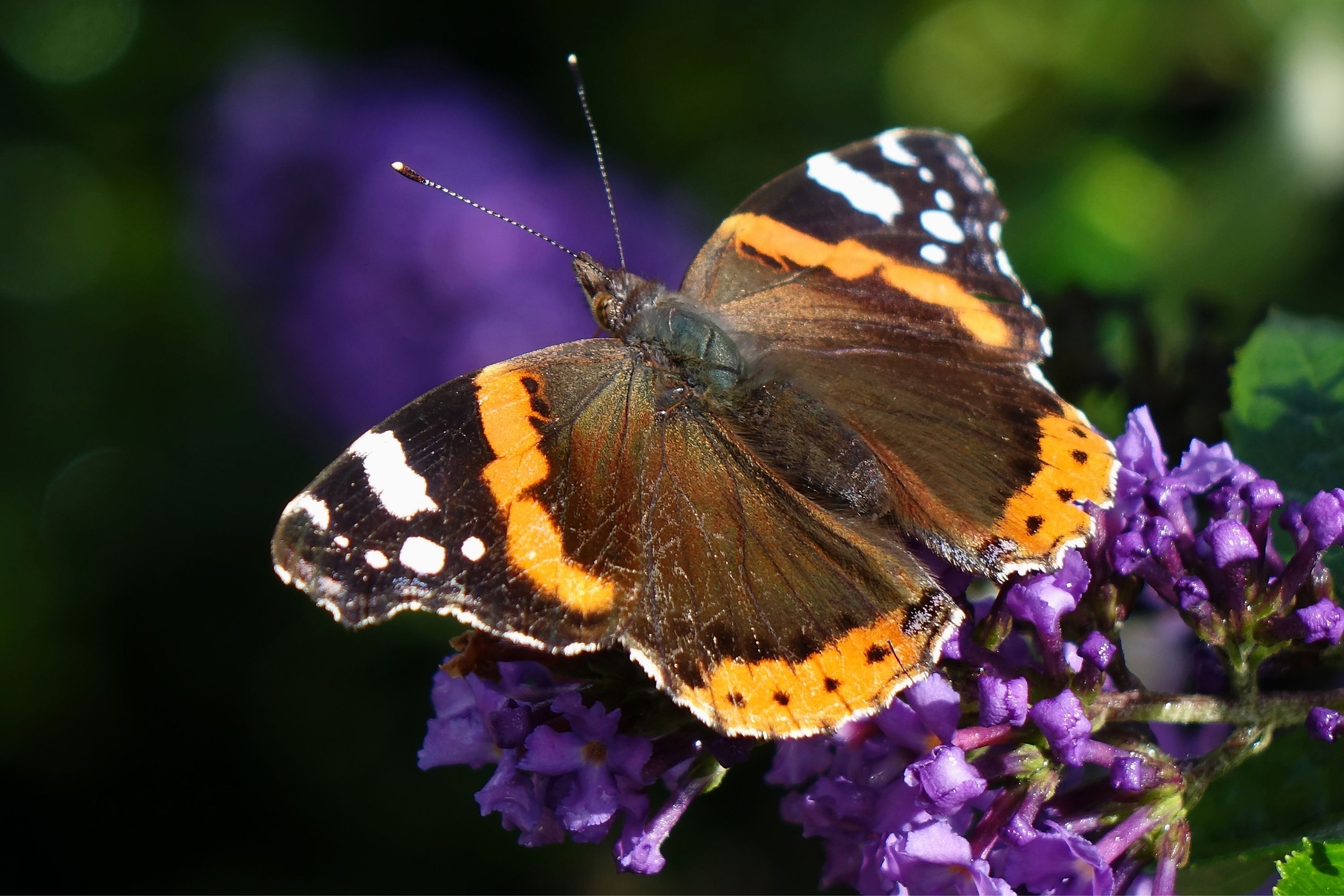Red admiral
(Vanessa atalanta)

Description
Vanessa atalanta, the red admiral or, previously, the red admirable, is a well-characterized, medium-sized butterfly with black wings, red bands, and white spots. It has a wingspan of about 2 inches (5 cm). It was first described by Carl Linnaeus in his 1758 10th edition of Systema Naturae. The red admiral is widely distributed across temperate regions of North Africa, the Americas, Europe, Asia, and the Caribbean. It resides in warmer areas, but migrates north in spring and sometimes again in autumn. Typically found in moist woodlands, the red admiral caterpillar's primary host plant is the stinging nettle (Urtica dioica); it can also be found on the false nettle (Boehmeria cylindrica). The adult butterfly drinks from flowering plants like Buddleia and overripe fruit. Red admirals are territorial; females will only mate with males that hold territory. Males with superior flight abilities are more likely to successfully court females. It is known as an unusually calm butterfly, often allowing observation at a very close distance before flying away, also landing on and using humans as perches. The forewing of this butterfly bears on a black ground an oblique vermilion band and a group of white subapical spots. On the hindwing the larger portion of the distal margin is red, with a row of small black spots and at the anal angle an elongate blue spot. The underside is partly variegated with blue; the forewing is on the whole similar in markings to the upper, while the hindwing is brightly variegated and clouded, bearing black markings, of which those in the cell resemble a figure (on the left wing 18 or 98, on the right 81 or 89); in the middle of the costal area there is a pale patch and in the distal marginal area a row of ocellus-like spots. Sometimes, especially in the female, the red band of the forewing bears a small white spot in the middle.
Taxonomic tree:







